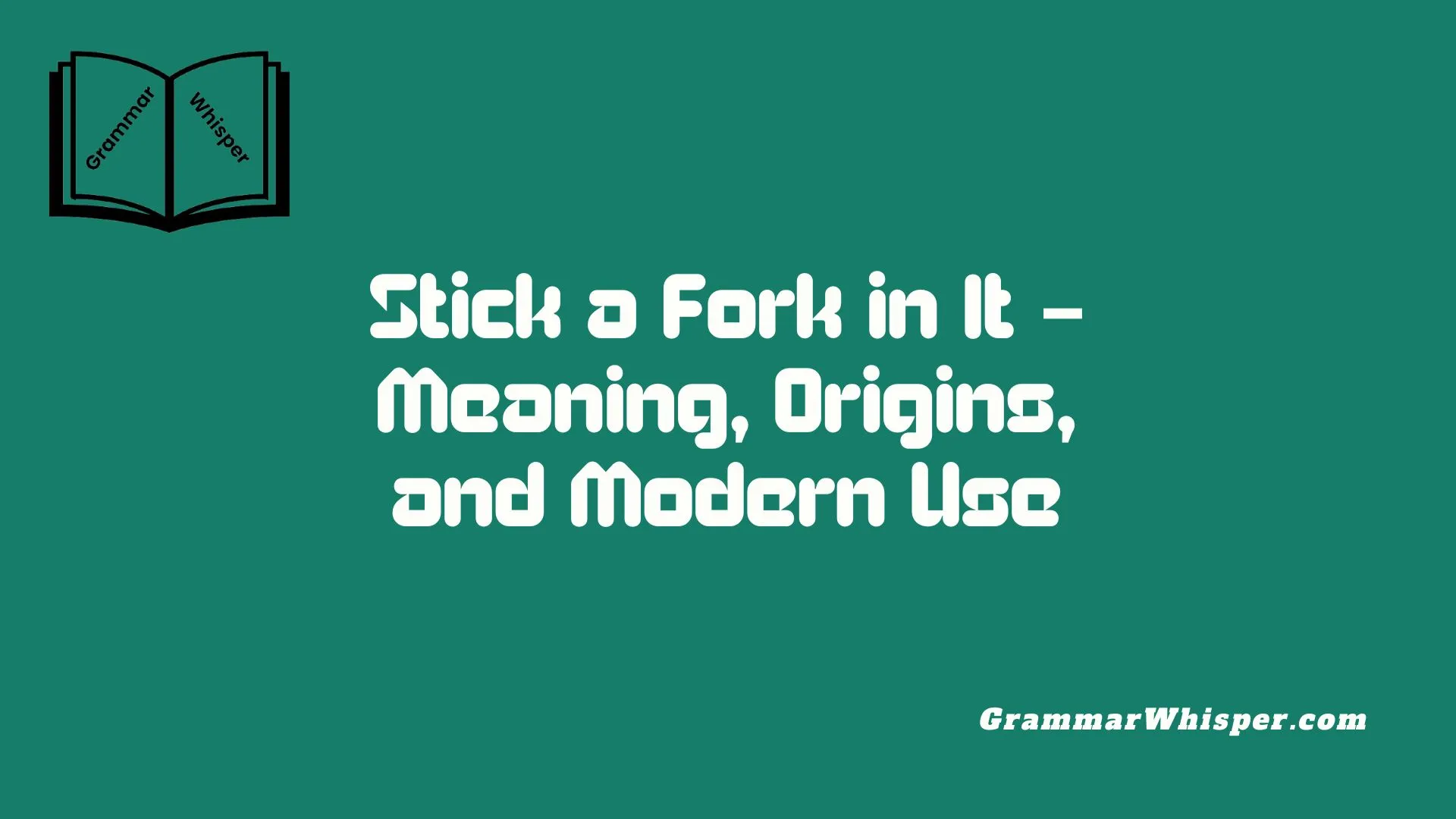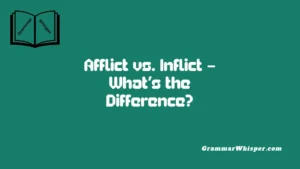Stick a Fork in It, and finality – this punchy, short phrase packs a lot more than it first seems. In the modern world, it shows up everyday – in the office, on Twitter, and in casual conversations or podcasts. It brings flair, clarity, and cultural weight that spans generations. Having worked with language in both creative and corporate spaces, I’ve often used this idiom to mark the end of a task with style. Whether it’s closing a project, ending a meeting, or wrapping up a lengthy discussion, the phrase vibrantly signals, “That’s it – it’s done.”
In countless Chat sessions and storytelling moments, I’ve shared anecdotes where this idiom stood out. Its true strength lies in its tonal flexibility – it can be conversational, humorous, or even cutting. It sticks because of its versatile usage and its ability to pepper speech with a sense of witty control. When you unwrap its origins, you see how language carries deeper patterns of meaning and history. As we continue to unpack it here, you’ll find examples, helpful tables, and real-life idiom breakdowns that anchor its staying power in expressive English. This idiom isn’t fading – it’s only growing sharper.
What Does “Stick a Fork in It” Mean?
At its heart, “stick a fork in it” signals finality. You use it to say something’s done – whether that’s a task, project, or even a person who’s toast.
- Literal sense: In cooking, you test if food is done – say, a baked potato – by poking it. If it goes in easily, it’s ready.
- Figurative sense: You use the phrase to declare something finished: “This report is ready – stick a fork in it.”
- It also carries a vibe of exhaustion or defeat: “After day three of non-stop coding, I’m sticking a fork in it.”
Dual Meaning in Context
| Usage Type | Example Sentence | Tone |
| Completion | “We launched the app – stick a fork in it.” | Proud / triumphant |
| Exhaustion or defeat | “After six hours of wrestling, I’m sticking a fork in it.” | Worn out / humorous |
This flexibility comes from its kinship with idioms like “call it a day” or “that’s all she wrote.” But “stick a fork in it” takes it further – it adds kitchen-flavor and vivid imagery.
Where Did the Idiom Come From? – The Real Origins
People often assume an idiom like this just popped up. But many say it emerged in post-war America. Let’s look at its breadcrumbs.
- First recorded usage dates to the 1950s–60s, around kitchen banter – home cooks testing doneness with forks.
- Researchers traced it to American baseball commentary – sportscasters used it to declare a game over, figuratively “done like a roast.”
- One documented use from 1967 appears in a newspaper quote about the World Series, saying a team was “done, stick a fork in them.”
- That crossover from cooking to sports to general speech illustrates a classic path: practical life → colloquial speech → mainstream idiom.
Culinary Roots: The Literal Beginning
Stick a fork in it started in kitchens – let’s get literal before going figurative.
- In cooking, chefs and home cooks use forks to test doneness:
- Meat: fork enters easily if cooked.
- Vegetables: fork-lady-soft cues “done.”
- Baked goods: fork-out-clean means ready.
- This real-world act formed a metaphor: “If you can stick a fork in it, it’s done.”
I remember watching my grandmother poke a casserole to check. If she nodded, she’d grin and say, “Time to eat – stick a fork in it!” That phrase later morphed from kitchen test to life test.
From Baseball to Boardrooms – Pop Culture and Anecdotal Spread
Soon the idiom left kitchens and entered baseball broadcasts. Here’s how:
- In the late 1960s, TV commentators used it to signal game over – like the winning team was “done.”
- It jumped from bleachers to living rooms then into everyday speech.
- By the 1980s, corporate leaders began saying, “Stick a fork in this report”, meaning finalize it.
- Today, tech teams, podcasters, and TikTok creators all use it.
This path (kitchen → baseball → boardroom → everyday) shows how idioms thrive – they spread when people find them vivid, memorable, and versatile.
How the Idiom Evolved Beyond the Kitchen
Over time, the phrase morphed into more than a kitchen check – it became a statement layered with tone.
- Completion – Projects, tasks, reports (“We’ve revised enough – stick a fork in it.”)
- Defeat/exhaustion – Tired moments (“After three drafts, I’m sticking a fork in this.”)
- Irony/sarcasm – Fun and snark (“After one tweet, she’s sticking a fork in her career.”)
Tone does the heavy lifting. A cheerful “stick a fork in it” celebrates a job done. But a weary one laments burnout. Add sarcasm and it swings toward comedy.
The Power of the ‘Done’ Double Meaning
What makes this idiom strong is that phrase “done” has two sides.
- Finished – like a dish or task.
- Defeated – like a boxer after a knockout.
Say “stick a fork in that cake,” and you mean “it’s ready.” Say it about ‘Monday fatigue’ and you mean “I’ve hit my limit.”
Cultural perception of “done”:
- In American culture, food metaphors anchor ideas.
- ”Done” signals closure – either celebratory or deflated.
- This makes the idiom versatile across tone and context.
Common Contexts for Using “Stick a Fork in It”
You’ll see this idiom pop up in many everyday places:
- Projects: “Our test launch went well – stick a fork in it.”
- Coding and dev: “The bug’s gone – stick a fork in it.”
- Fitness: “After five miles, I’m ready – stick a fork in it.”
- Arguments: “He gave up mid-discussion – stick a fork in that.”
- Casual speech: “The pizza’s cold now – stick a fork in it.”
Everyday Use: Examples in Real Sentences
Here are seven use cases that show how flexible – and human – the idiom is:
- Work report: “The draft’s final. Stick a fork in it.”
- Long run: “Hit 10 miles today, so stick a fork in me.”
- Cooking food: “The lasagna’s bubbling – stick a fork in it.”
- Sports call-out: “With that third strike, stick a fork in him.”
- Coding: “All tests passed – stick a fork in that module.”
- Relationship talk: “After three breakups, stick a fork in my love life.”
- TV context: “They canceled Season 2? Stick a fork in that show.”
Use these structures by adjusting nouns and tone to suit your scene.
Media & Pop Culture Usage
This idiom features in many forms of media:
- TV sitcoms: It shows up in shows like Friends, The Office, Parks & Rec.
- Movies: In comedies, characters use it for dramatic effect – especially when giving up or celebrating.
- Music and stand-up: Comedians weave it into punchlines.
- Social media: TikTok, threads, memes – people caption leftovers or fatiguing days with “stick a fork in it.”
It stayed fresh by always sounding natural – and because it’s so adaptable emotionally.
Modern Variations and Similar Expressions
Want alternatives? Here are some close cousins:
| Idiom | Nuance |
| Call it a day | Stop working, conclude a day of effort |
| That’s all she wrote | It’s over, emphasis on suddenness |
| Game over | Competitive or dramatic ending |
| Put a bow on it | Finished with polish |
| Stick a fork in it | Done, finality, edible/emotional closure |
While each idiom differs slightly in feel, they share emphasis on completion – but only “stick a fork in it” adds that kitchen imagery and playful punch.
Common Misunderstandings and Misuses
Even great idioms face misuse. Here’s what not to do:
- Wrong tone: Avoid saying it in overly solemn contexts like funerals – tone can offend.
- Overuse: Using it too often in a paragraph reduces its impact.
- Misrepresentation: Don’t say it about people unless the tone’s clear – you risk sounding mean.
- In formal writing: Skip it in legal docs or academic papers – too informal.
How to Use “Stick a Fork in It” in Writing and Speech
Got creative writing or casual talk ahead? Here are pro tips:
- For humor: Use it sarcastically. “After my cat knocked over the vase, stick a fork in my DIY spirit.”
- To celebrate: “We’ve hit deployment – stick a fork in it!”
- In dialogue: Adds realism. People talk this way in kitchen, office, gym.
- Tone checks: Adjust for seriousness or levity.
- Public use: Fine in emails among peers but not in formal client communications.
Cultural Longevity – Why This Idiom Endures
Why does it still work in 2025 and beyond?
- Food idioms stick – they’re easy to visualize.
- Versatile – works for tasks, emotions, humor.
- Short and snappy – fits tweets, headings, marketing lines.
- Comforting nostalgia – evokes home cooking and shared history.
That blend gives the idiom stickiness – it stays in your mind (pun intended).
Case Study: Viral Use of “Stick a Fork in It” on Social Media
In March 2024, a fitness coach went viral on TikTok after posting a 10-minute burnout workout. She wrote:
“At rep 100, I said ‘stick a fork in this workout’ and collapsed.”
The video got 2 million views and the caption trended because:
- It blended kitchen humor with physical exhaustion.
- It used a familiar phrase in a dramatic, visual way.
Users commented:
“I literally felt that in my bones” “Forked up my own workout lol”
This case shows:
- Relatable tone
- Visual metaphor
- Cross-context appeal (works in kitchen, gym, life)
Linguistic Analysis: Idiomatic Flavor and Colloquial Function
From a language lens, here’s why the idiom packs a punch:
- It’s a metaphor built from literal action (sticking fork in food) + meaning (completion).
- It appears flexibly:
- Start: “Stick a fork in it, the project’s wrapped.”
- Middle: “We’ve revised the deck – stick a fork in it – let’s pitch.”
- Punchline: “Stick a fork in my weekend – I’m done.”
The phrase behaves like a verbal “mic drop” – punctuating action or emotion clearly and memorably.
Final Thoughts
The idiom “stick a fork in it” is more than just a quirky turn of phrase – it’s a powerful linguistic tool that delivers clarity, tone, and personality in a few short words. Rooted in the literal act of testing food for doneness, it has journeyed through kitchens, ballparks, boardrooms, and into pop culture and digital language.
Its enduring popularity stems from three key strengths:
- Vivid imagery – Everyone can visualize sticking a fork in something.
- Emotional versatility – It can express relief, exhaustion, humor, or finality depending on tone.
- Cultural flexibility – It fits equally well in a meme, a marketing line, or a casual chat between coworkers.
Whether you’re signing off an email, wrapping up a workout, or reacting to a chaotic day, saying “stick a fork in it” adds flavor and fun to your communication.
FAQs
Is “stick a fork in it” rude?
Not usually. It’s informal, friendly – and often humorous. Just avoid it in overly somber or formal settings.
Can this idiom be used professionally?
Sure – if your workplace is casual. Tech teams, creative agencies, and startups use it. Avoid legal or financial documents though.
What’s the difference between “stick a fork in it” and “it’s over”?
“It’s over” states a fact, often flatly. “Stick a fork in it” adds imagery, emotion, and tone – more colorful and conversational.
Is the idiom still popular in 2025?
Definitely. Social media, podcasts, and everyday speech keep it alive. The March 2024 TikTok shows it’s far from dated.
What’s the best synonym for “stick a fork in it”?
Depending on context:
- “Call it a day” for casual or work wrapped.
- “That’s all she wrote” for finality with drama.
- “Put a bow on it” for polished endings.











